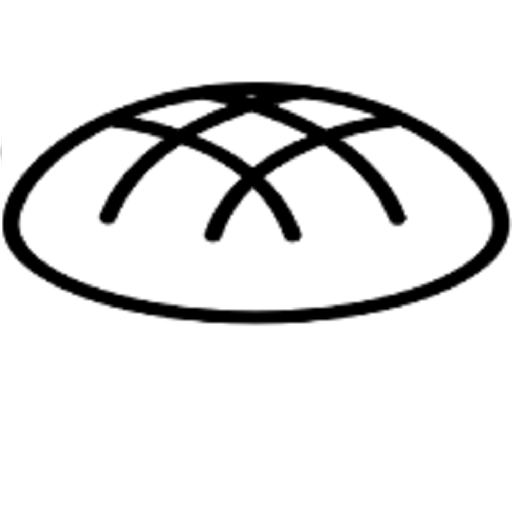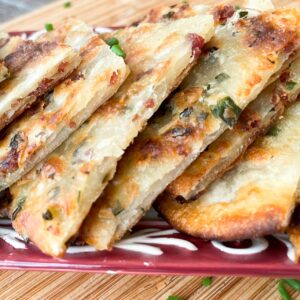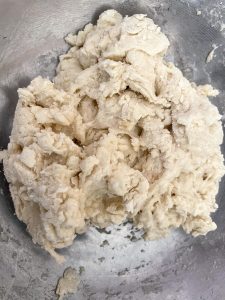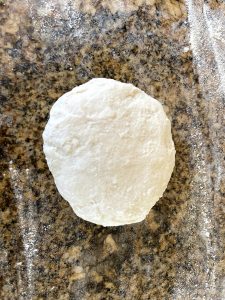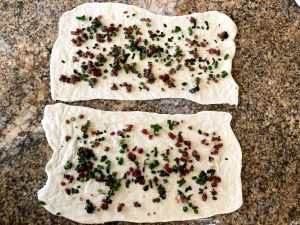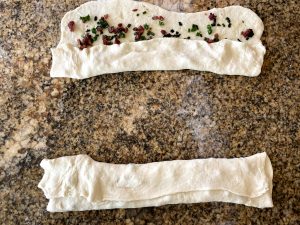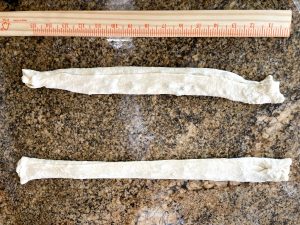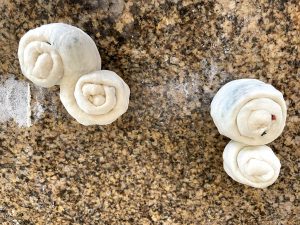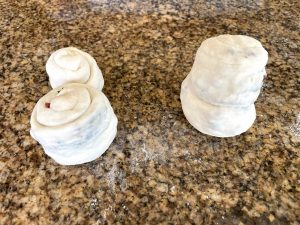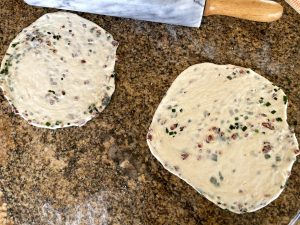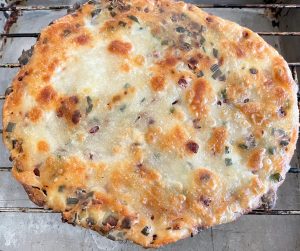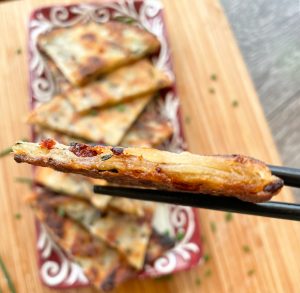0 Comments
share this
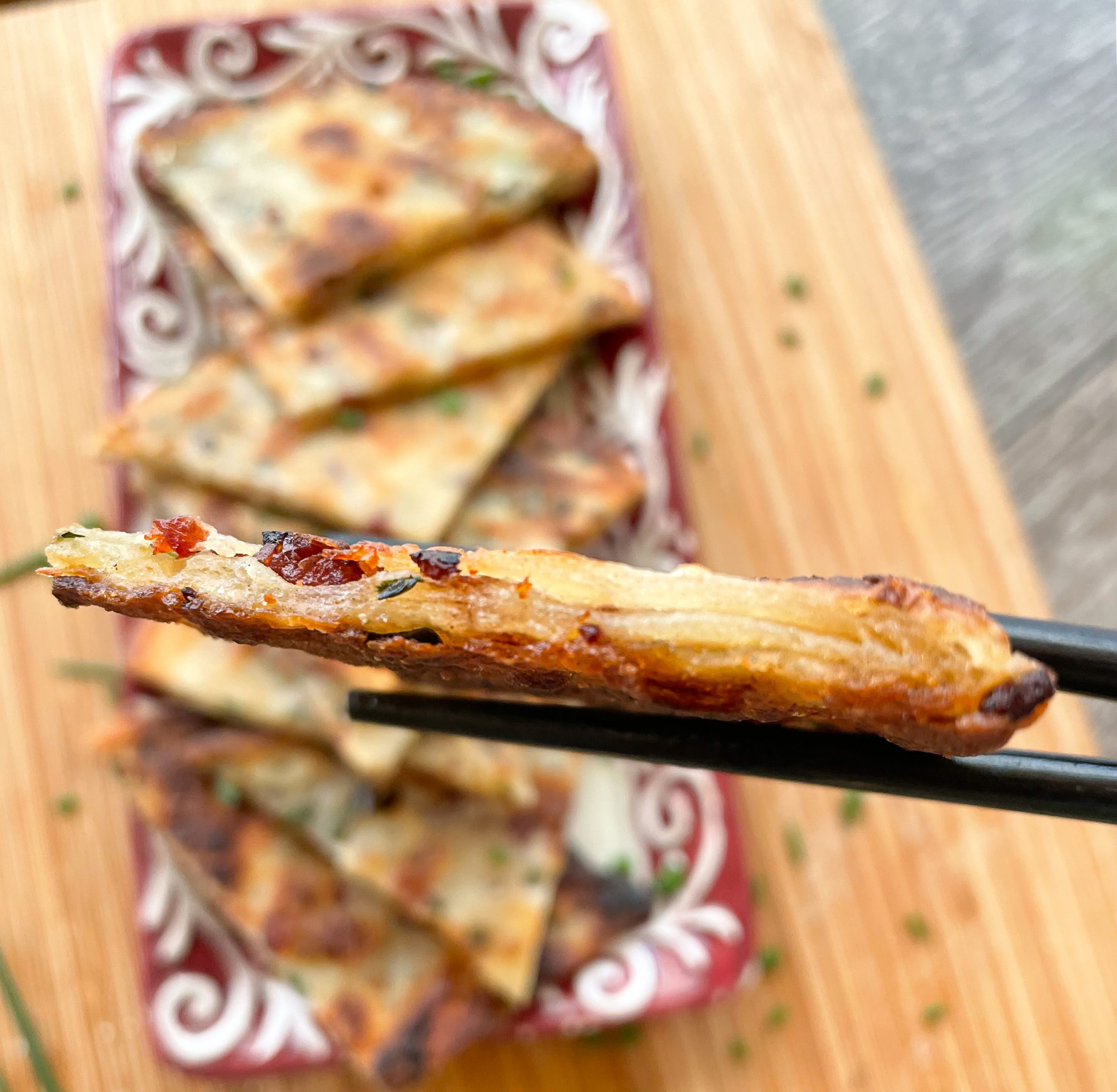
The first time I ate scallion pancakes was at a hole-in-the-wall restaurant in Boston Chinatown during my college years. I believe it was on a date with my now husband, Alex. I would not have recommended the restaurant for a date night, but I do recall the food. It was delicious. Unfortunately, that restaurant is no longer there. The dough of the scallion pancake was light and flaky with just the right amount of scallion and salt.
During one of my college summers, a group of friends rented a house. We would take turns making dinner for the entire house. Some of the creations were creative and interesting! I remember one of our housemates, Karen, teaching us her grandmother's scallion pancake recipe. It was so good and easy that I still remember it. At that time, I was fascinated by the unique rolling technique, but never questioned it and just did it. It was much later that I realized the purpose and importance of that process. It was an ingenious laminating technique that didn't require butter!
After doing some research and experimentation, I have tweaked the recipe slightly to make it interesting and more flaky. I've added Chinese sausage which adds a little sweetness and who doesn't like Chinese sausage? Instead of the traditional addition of lard to make the dough flaky, I create a paste with the combination of the Chinese sausage rendering and flour which helps laminate the pastry. The rolling process includes an extra coil which adds additional layers to the dough.
Tips to making scallion pancakes with Chinese sausage.
Chinese sausage.
I experimented with adding Chinese sausage and this was an immediate hit with the family. The fat rendering helps laminate the dough and the sweetness of the sausage gives the scallion pancakes an added dimension. The sausage needs to be finely diced and sauteed to ensure that it is not overpowering but just provides morsels of surprises!
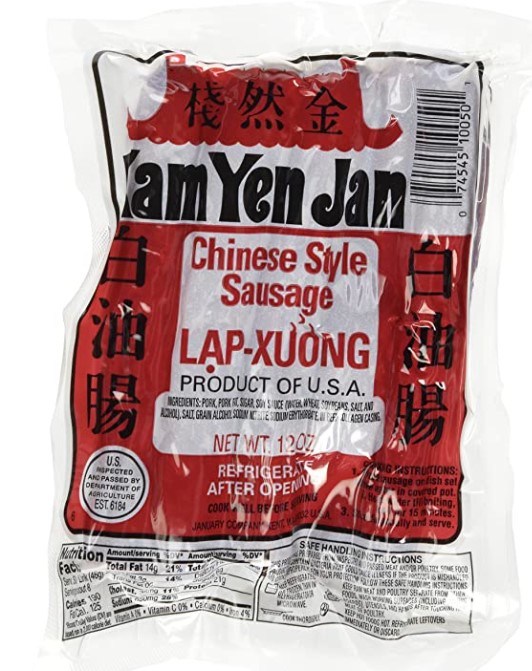
Scallions.
You can use scallions or chives. If you are using scallions, cut the harder white parts down the stem before slicing to ensure that all the pieces are tender when rolling the dough.
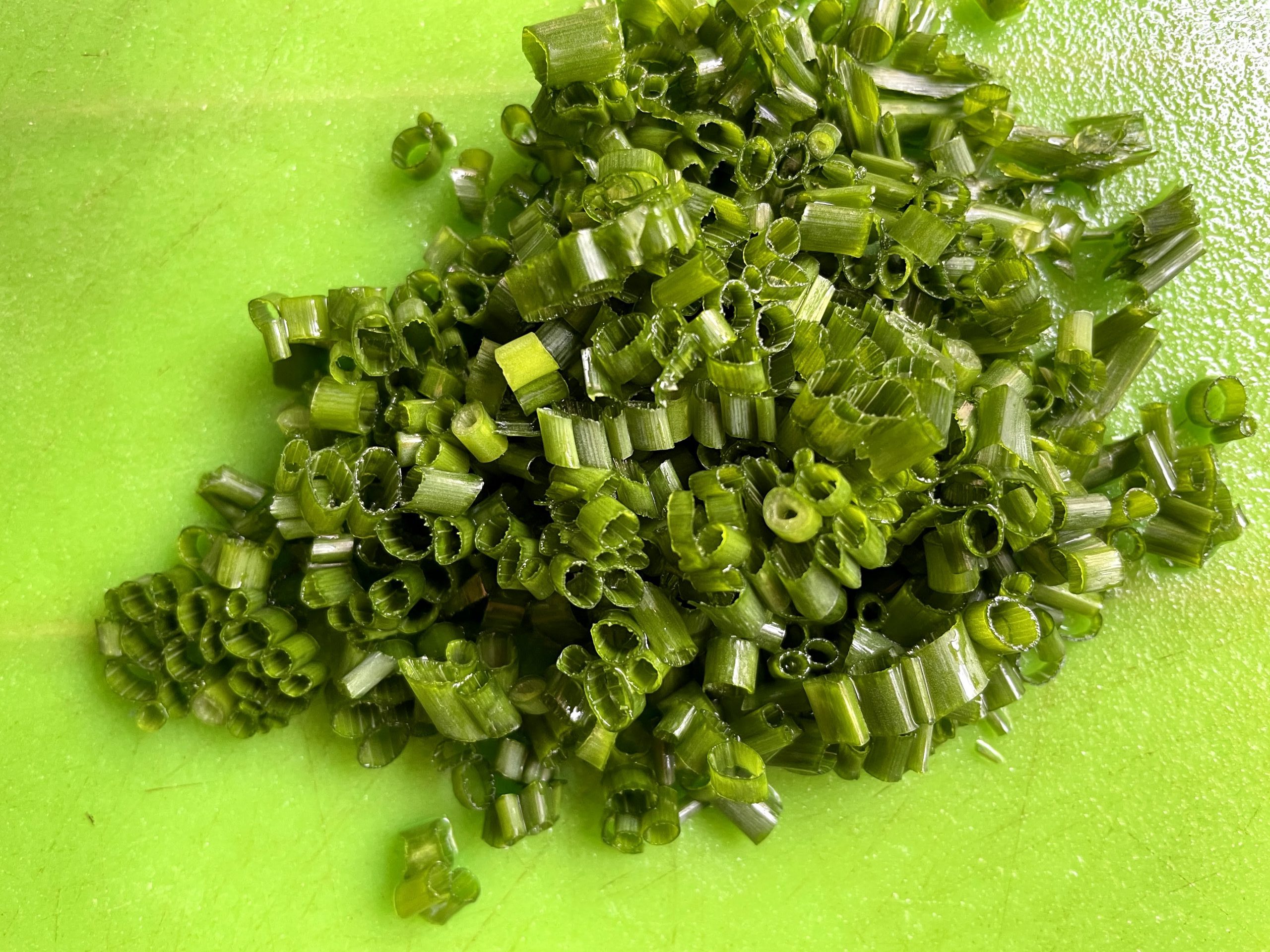
Scallions or chives can be used for scallion pancakes
Flour.
To achieve the many layers, the dough should not rise like bread. In order to prevent the dough from rising, flour with a low protein level is used and gluten development inhibited. In the USA all purpose flour has a slightly higher protein level than cake flour. Cake flour is ideal but all purpose flour will work. Do not use bread flour.
Boiling water is added to the flour to prevent gluten development. Mix the boiling water into the dough with chopsticks, followed by room temperature water. The dough should be fairly soft. Allow the dough to autolyse to have the flour fully absorb the water. After the dough is autolysed, it should form a smooth ball when kneaded.
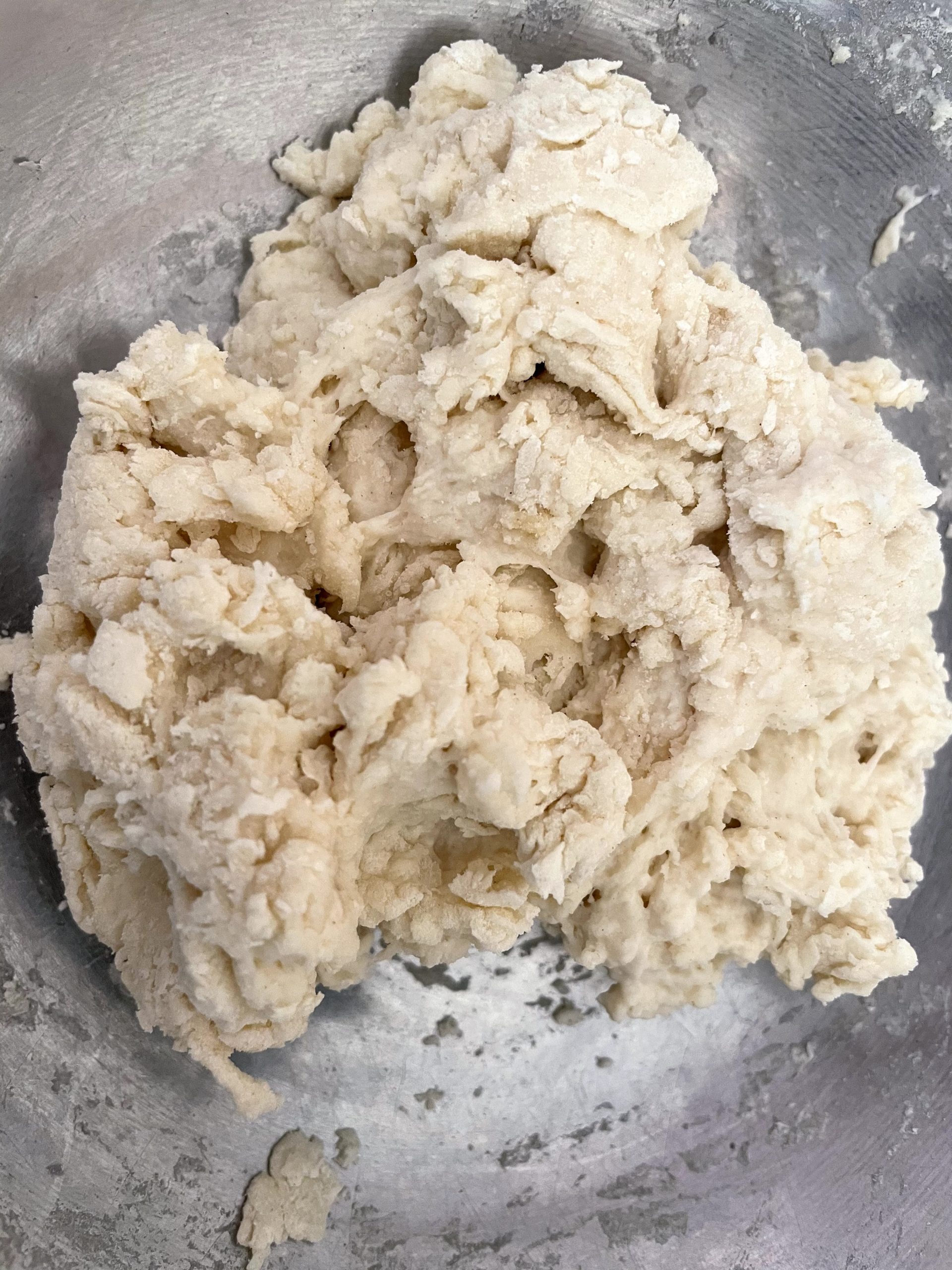
Dough texture after being mixed with water.
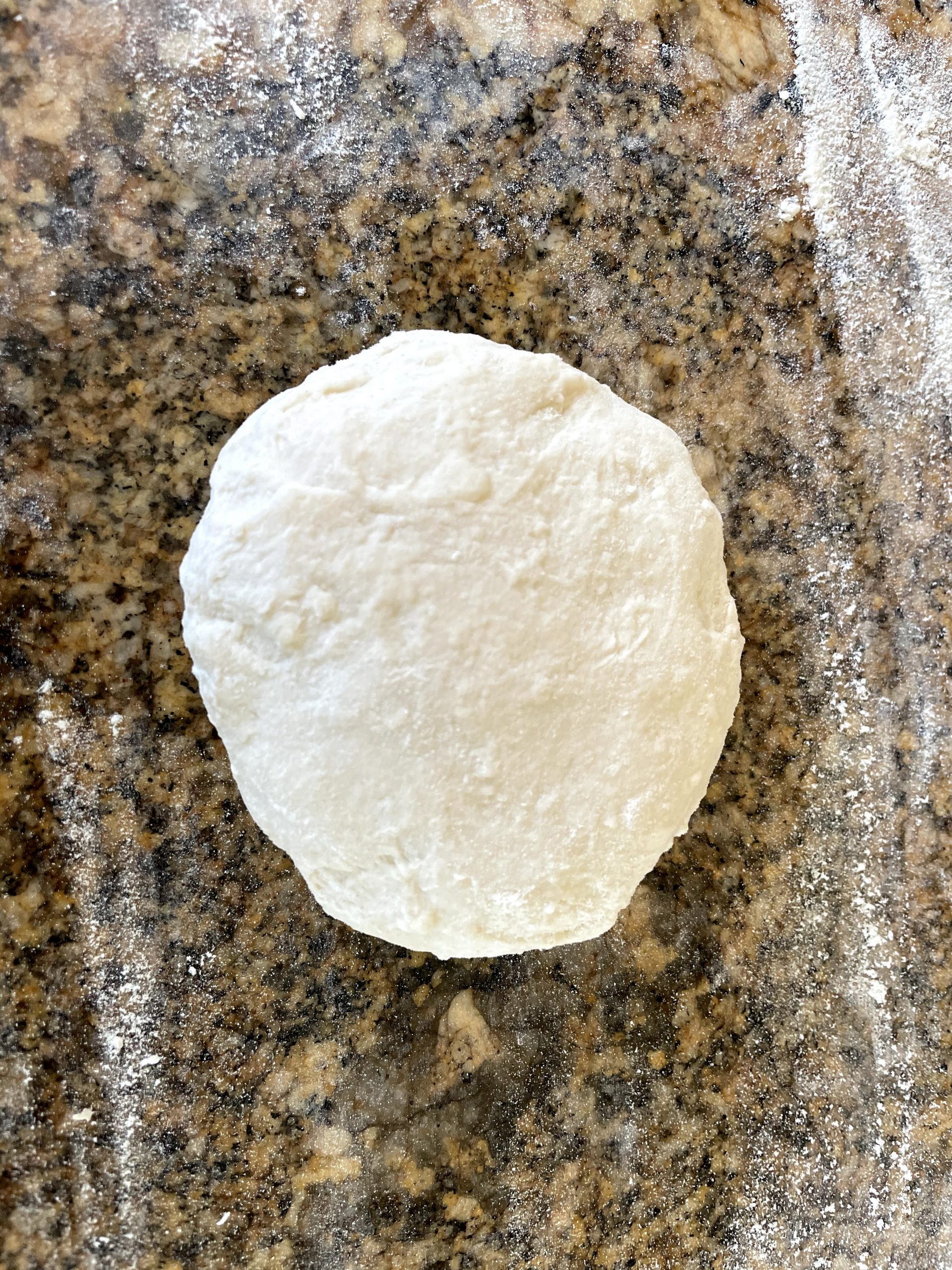
Dough texture after kneading.
Lamination.
Lamination is the process of creating layers of dough between layers of fat, usually butter, to get a layered effect. In order to achieve the layers in the scallion pancake dough, fat needs to be added. However, for the scallion pancakes, instead of butter, oil is used. To prevent the oil from absorbing into the dough, I create a paste by mixing the oil and Chinese sausage rendering with some flour.
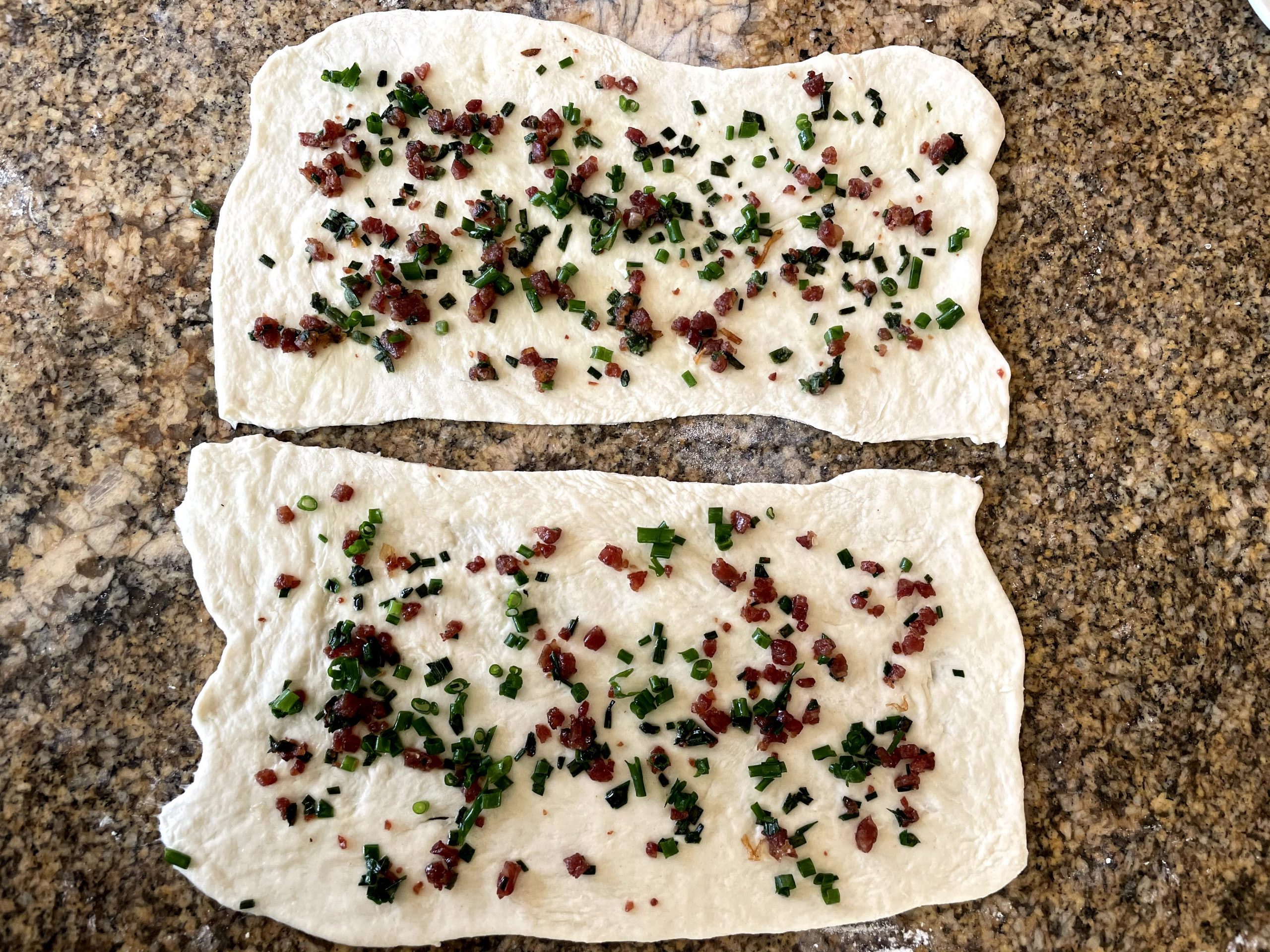
Apply a paste of oil, Chinese sausage, scallion and flour onto rolled dough sheet.
After the paste is applied, the dough is rolled into a roulade or swiss roll. This creates the layers by separating the dough with the paste mixture.
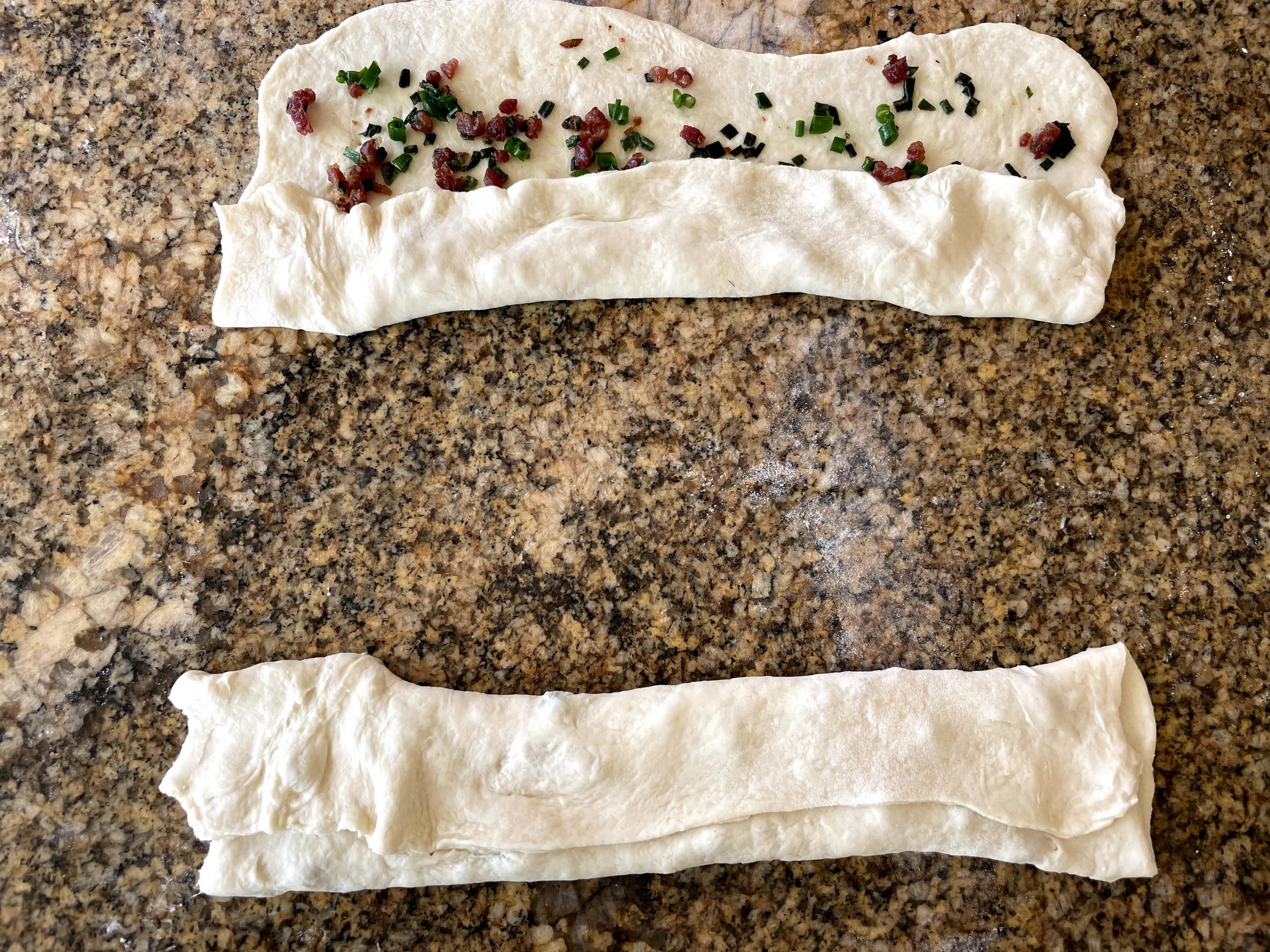
Roll the dough into a roulade or swiss roll. You can also just fold it into thirds.
Stretch the dough to form a long "tube" to disperse the mixture and gently flatten the tube.
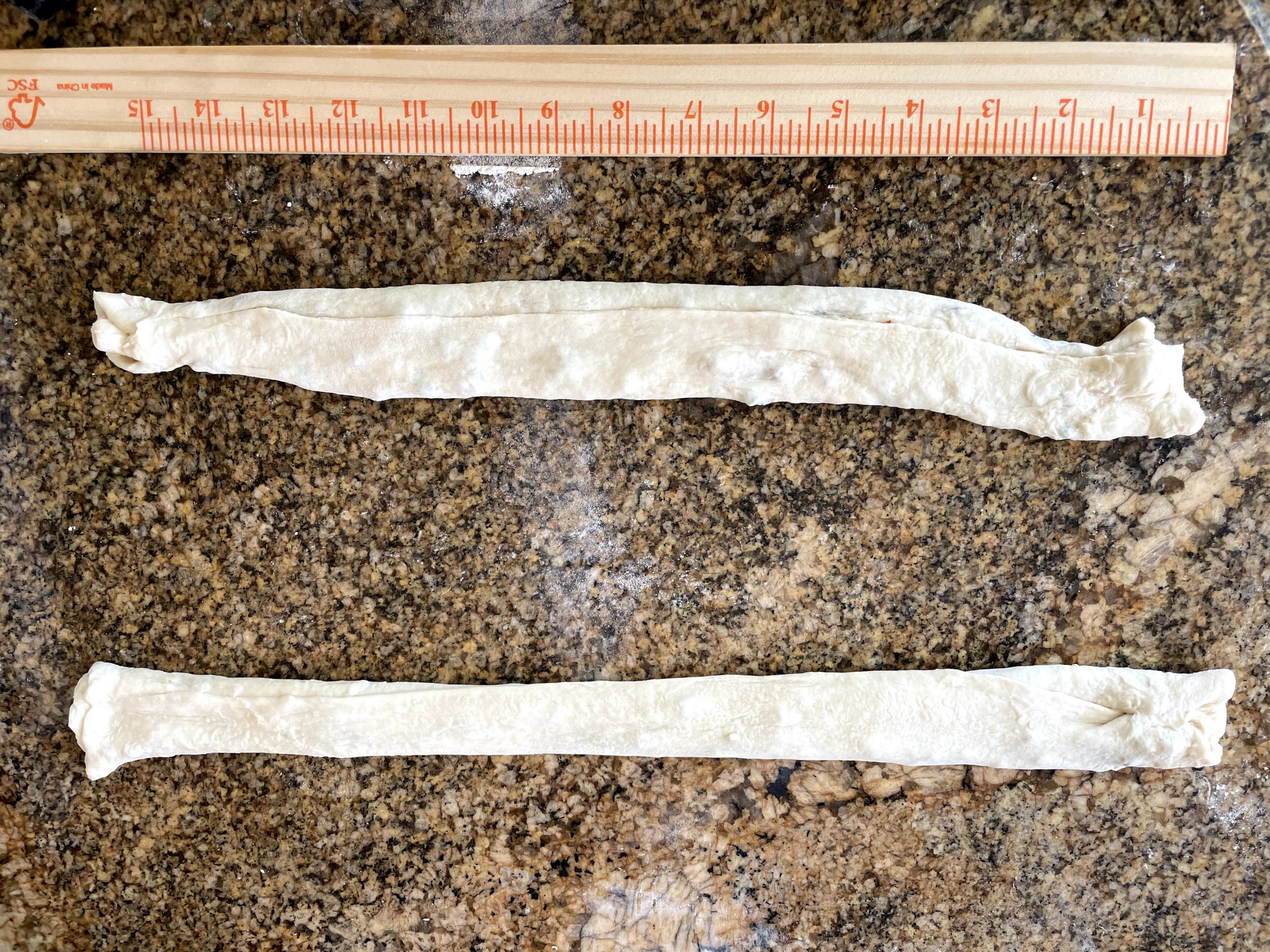
Stretch the dough to form a long snake.
Coiling the dough.
Coil each end of the "tube" in opposite directions to form a figure 8. Twist the dough at the intersection and place one coil on top of the other. This doubles the layers and increases the flakiness.
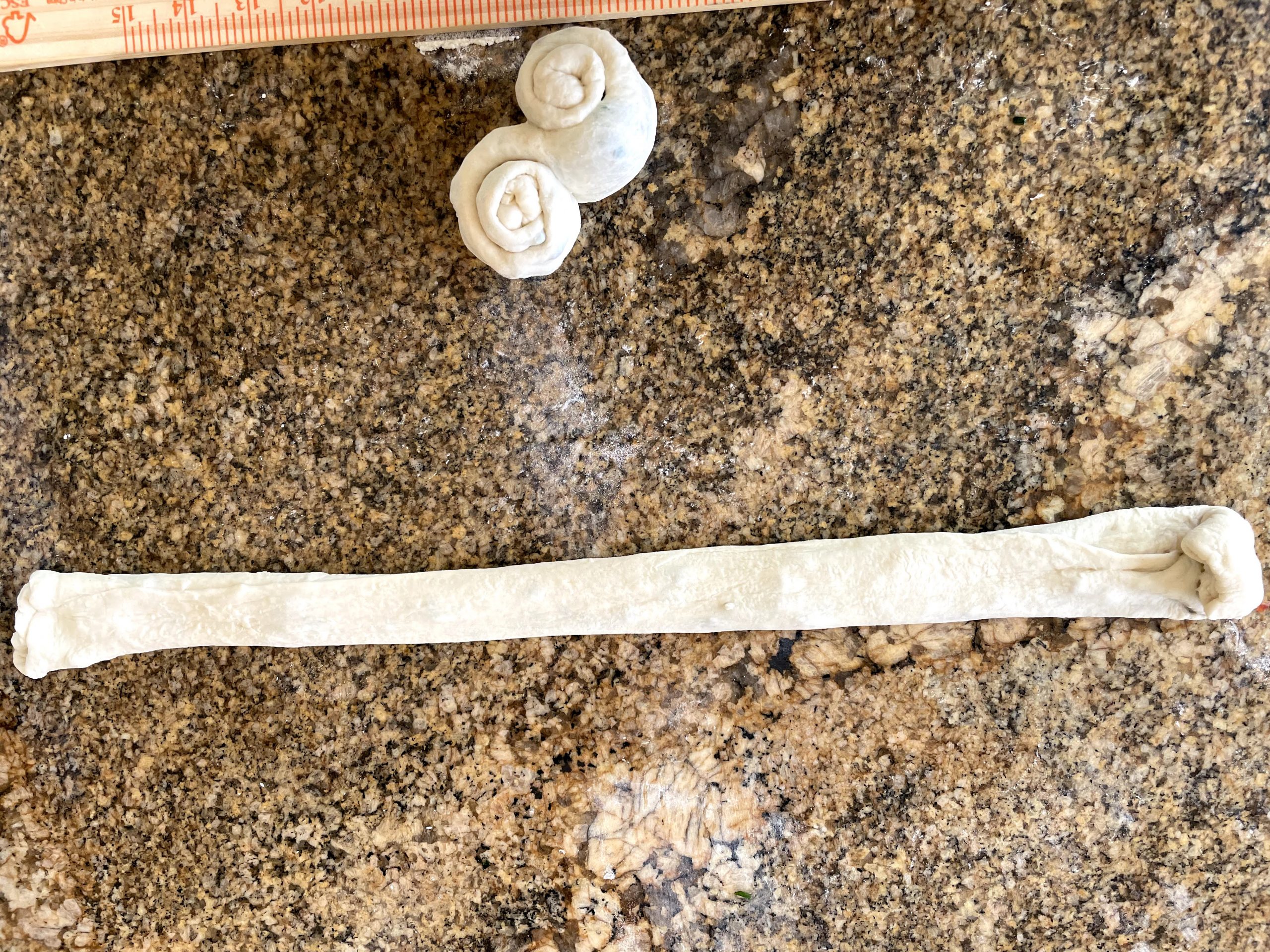
Coil both ends of the dough in different directions, forming a figure 8
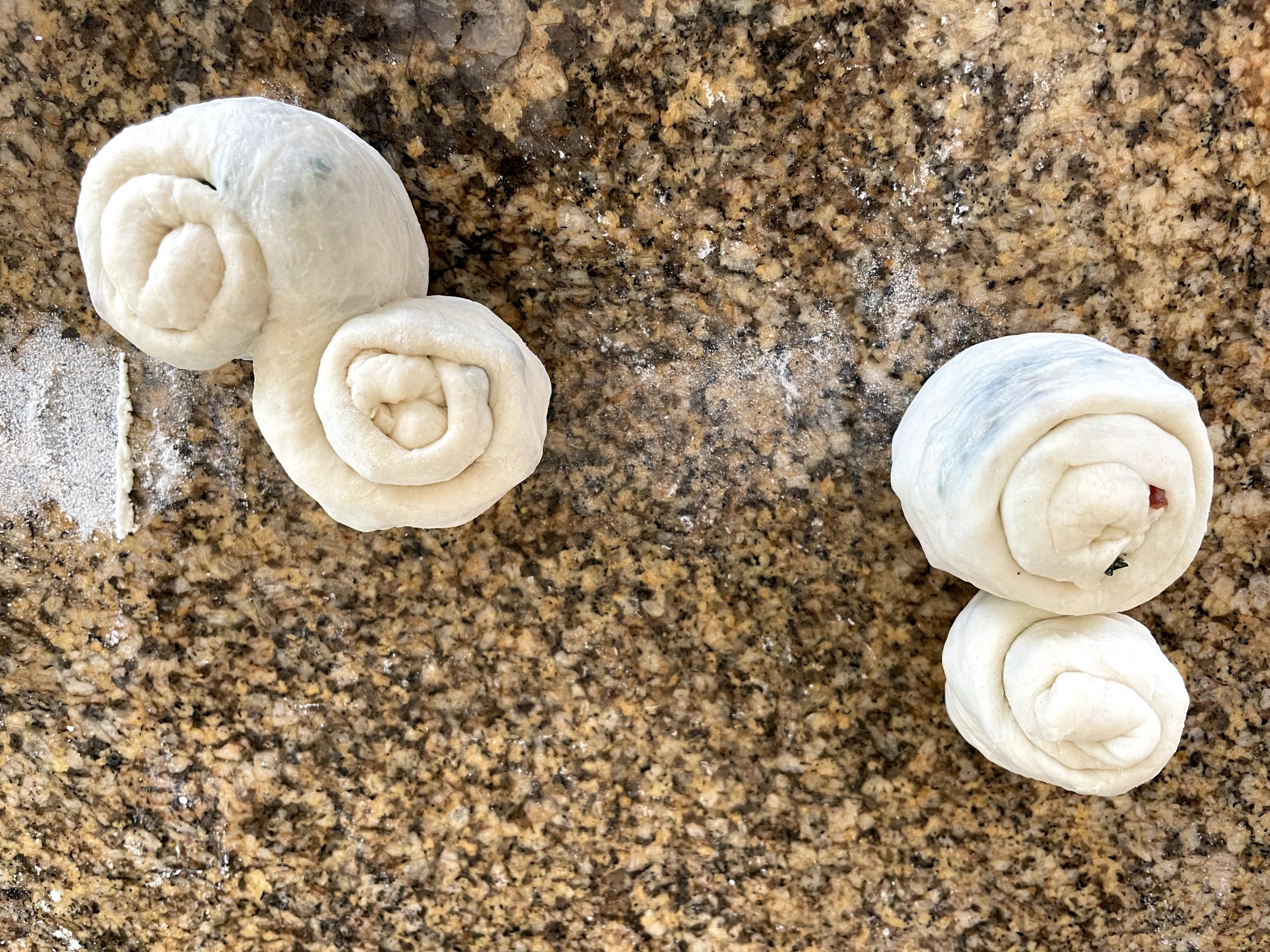
Coiled dough.
Once one coil of dough is flipped over and stacked onto the other coil, flatten the dough with the palm of your hand. This should result in thick discs with visible coils showing through. Allow these discs to rest in the refrigerator for at least 1/2 hour to overnight. This allows the Chinese sausage rendering to solidify in the coils, further separating the dough layers.
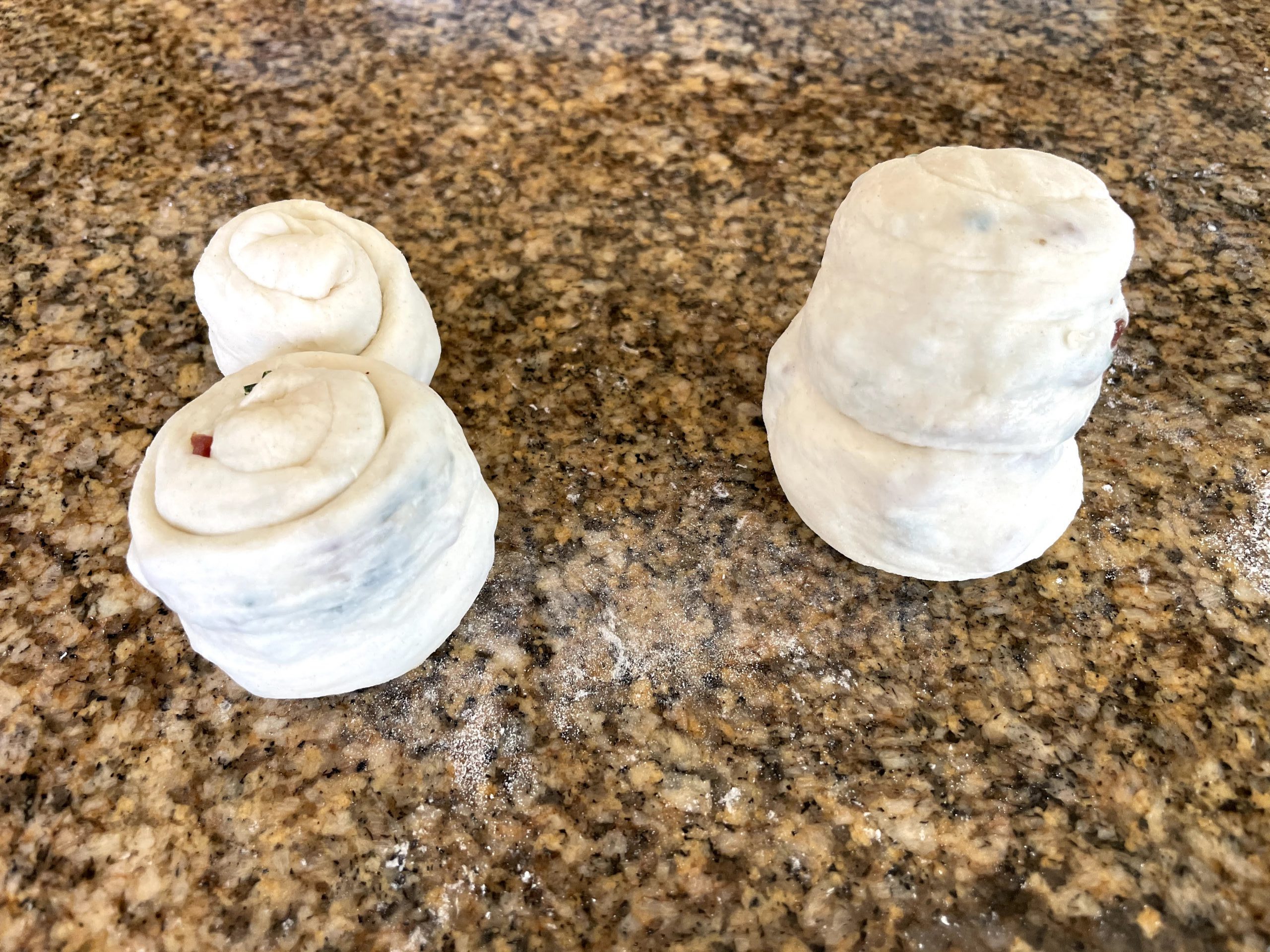
Stack the coils by twisting the dough at the intersection.

Using your palm, flatten the dough into discs.
After the dough has rested, roll the dough out on an oiled surface with an oiled rolling pin. The dough should be relaxed and easy to work with. The oiled surface seems to work better than a floured surface.
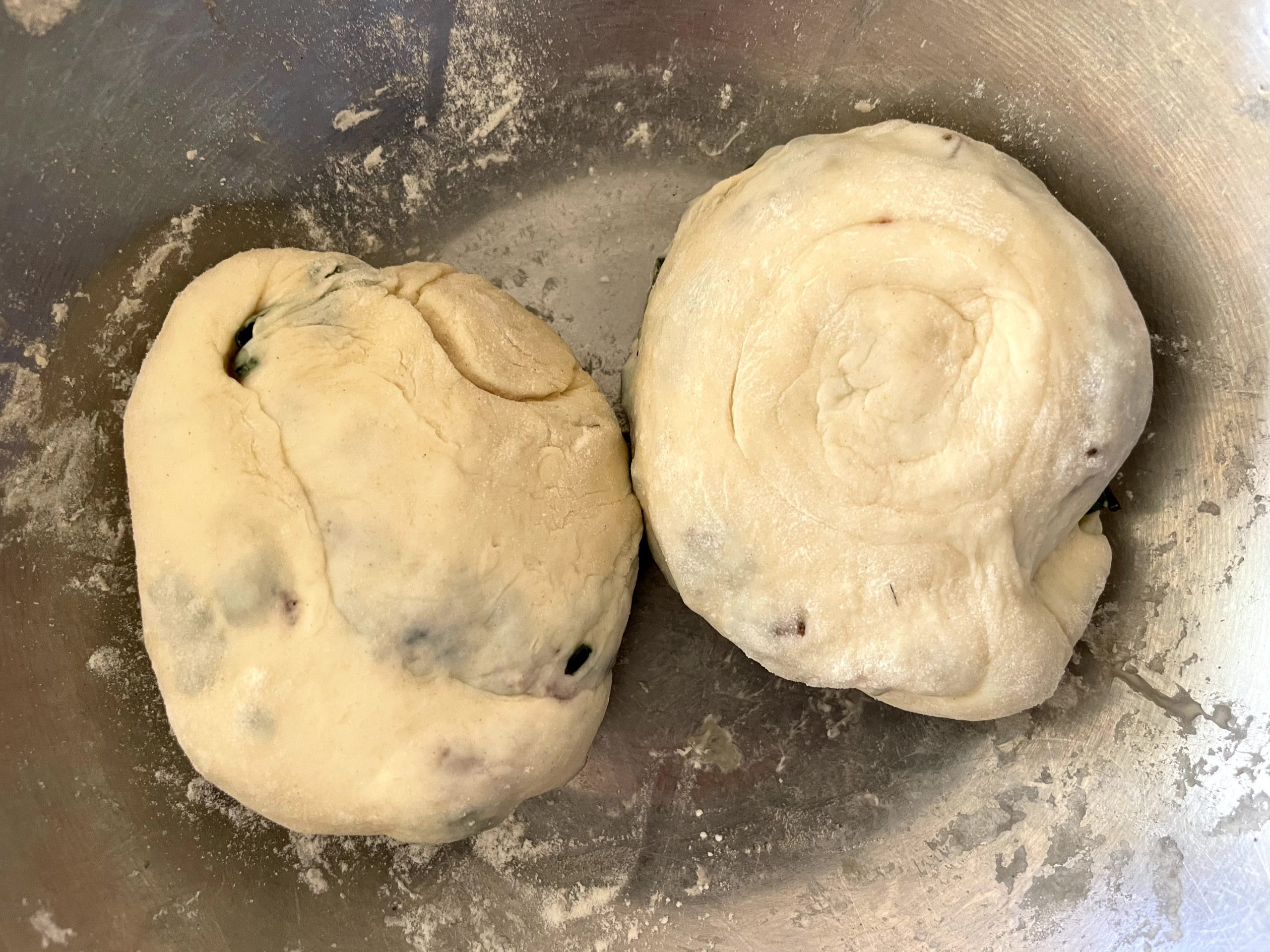
Allow the dough to rest for at least 1/2 hour.
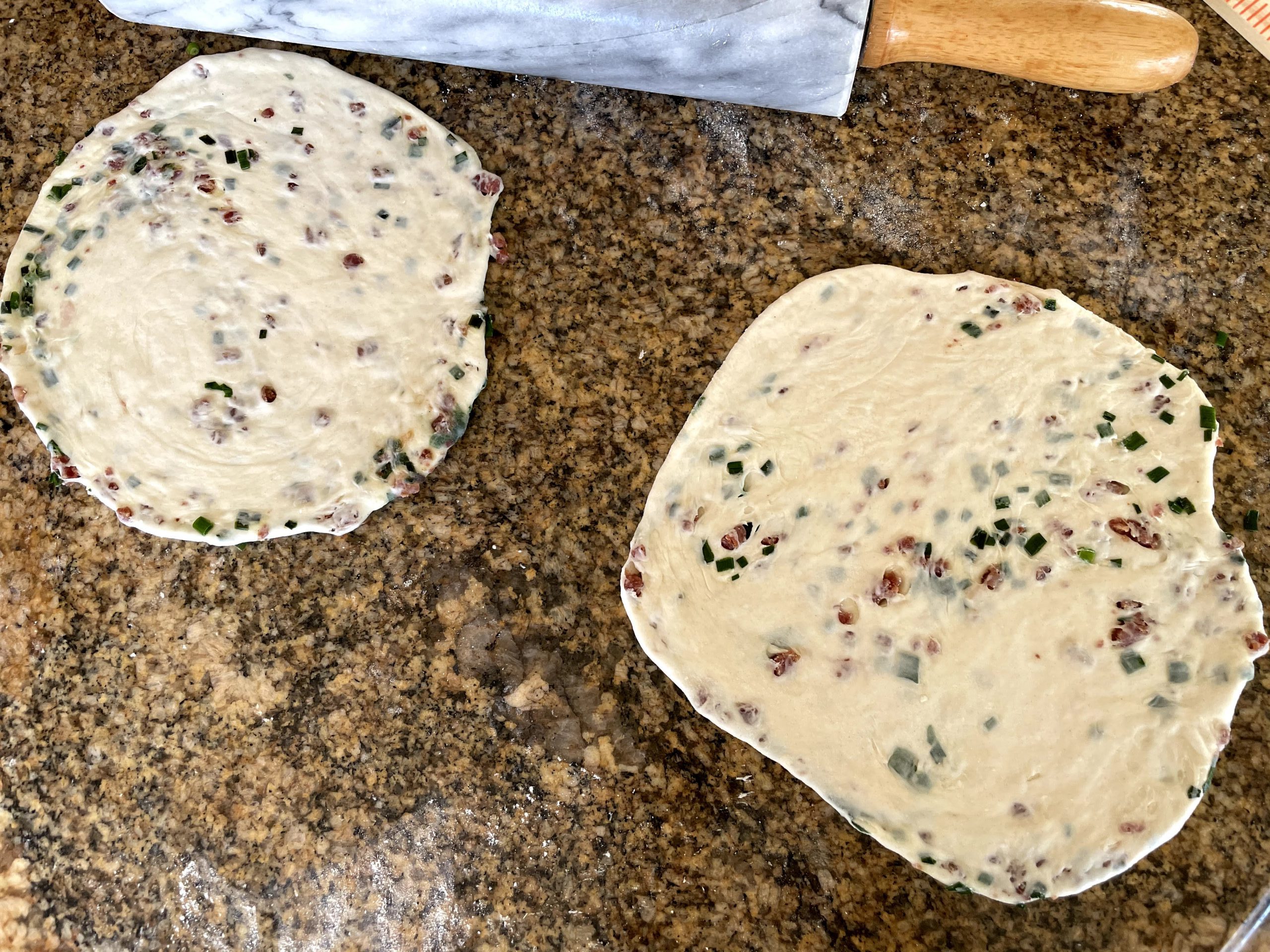
Roll dough into 1/4" discs before frying.
Frying the scallion pancakes with Chinese sausage.
The scallion pancakes with Chinese sausage requires a shallow fry. Heat a skillet with a 1/2" (1.25 cm) oil. These scallion pancakes do not require deep frying. The oil should be medium hot around 375 degrees fahrenheit (191 degrees celcius). Fry the pancake on both sides until golden brown. Remove the pancake and place it on a wire tray. Do not place it on paper towels as this tends to make the pancakes soggy!
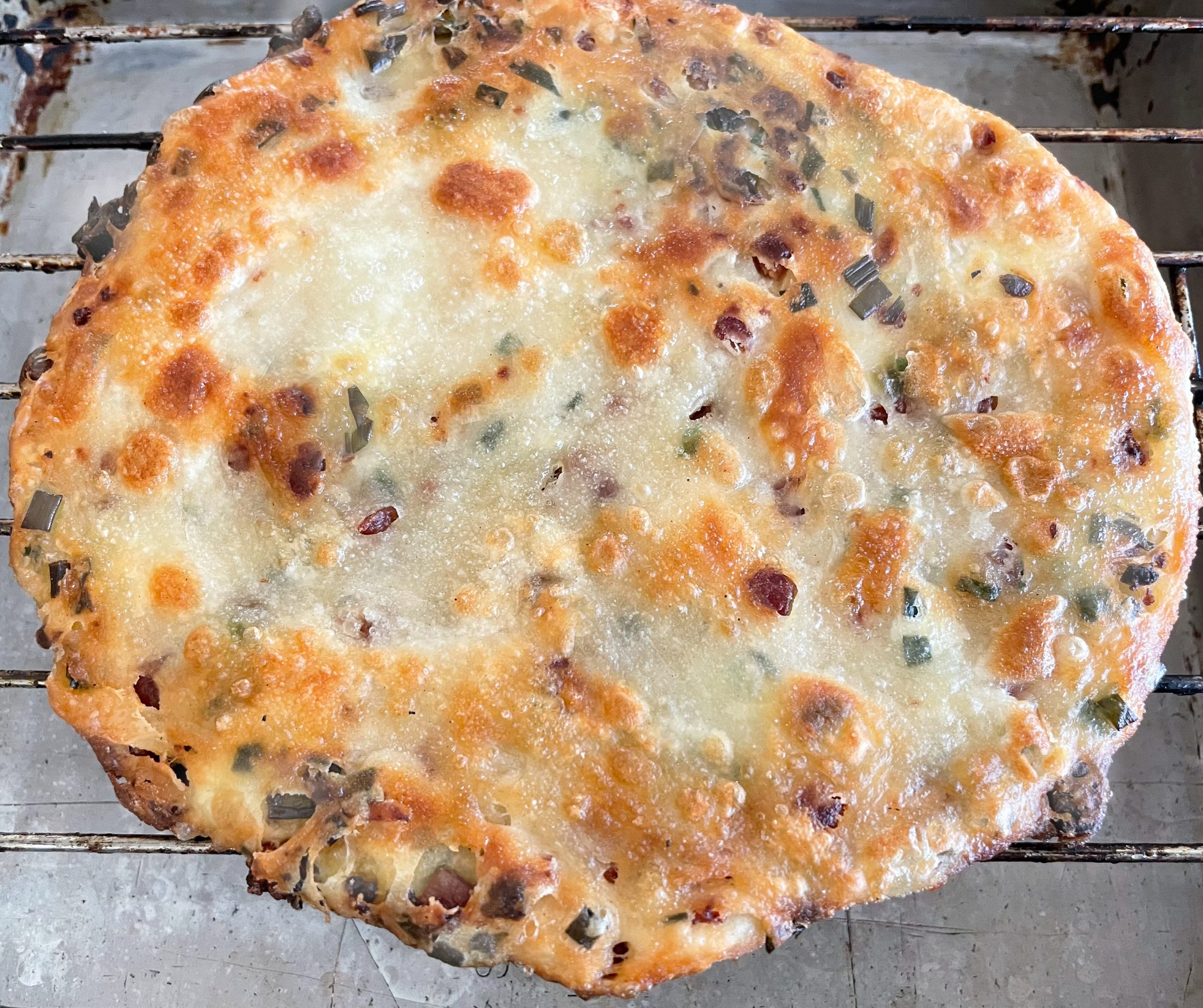
Scallion pacakes with Chinese sausage fried until golden brown.
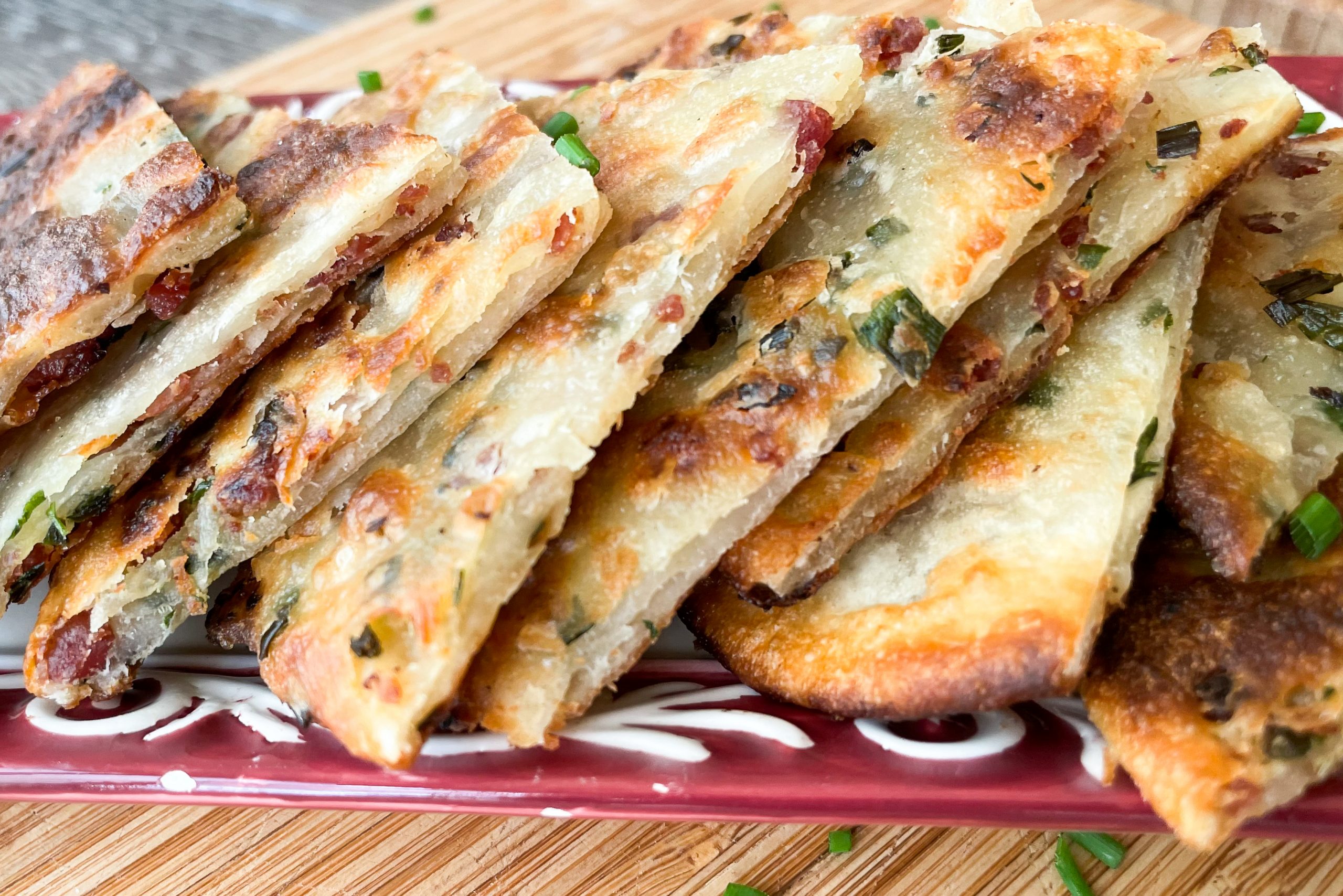
Flaky scallion pancakes.
It is easier to cut these pancakes with a pair of scissors than with a knife. Serve the pancakes hot with soy-sauce, if needed! Enjoy and let me know what you think of this creation in the comment section!
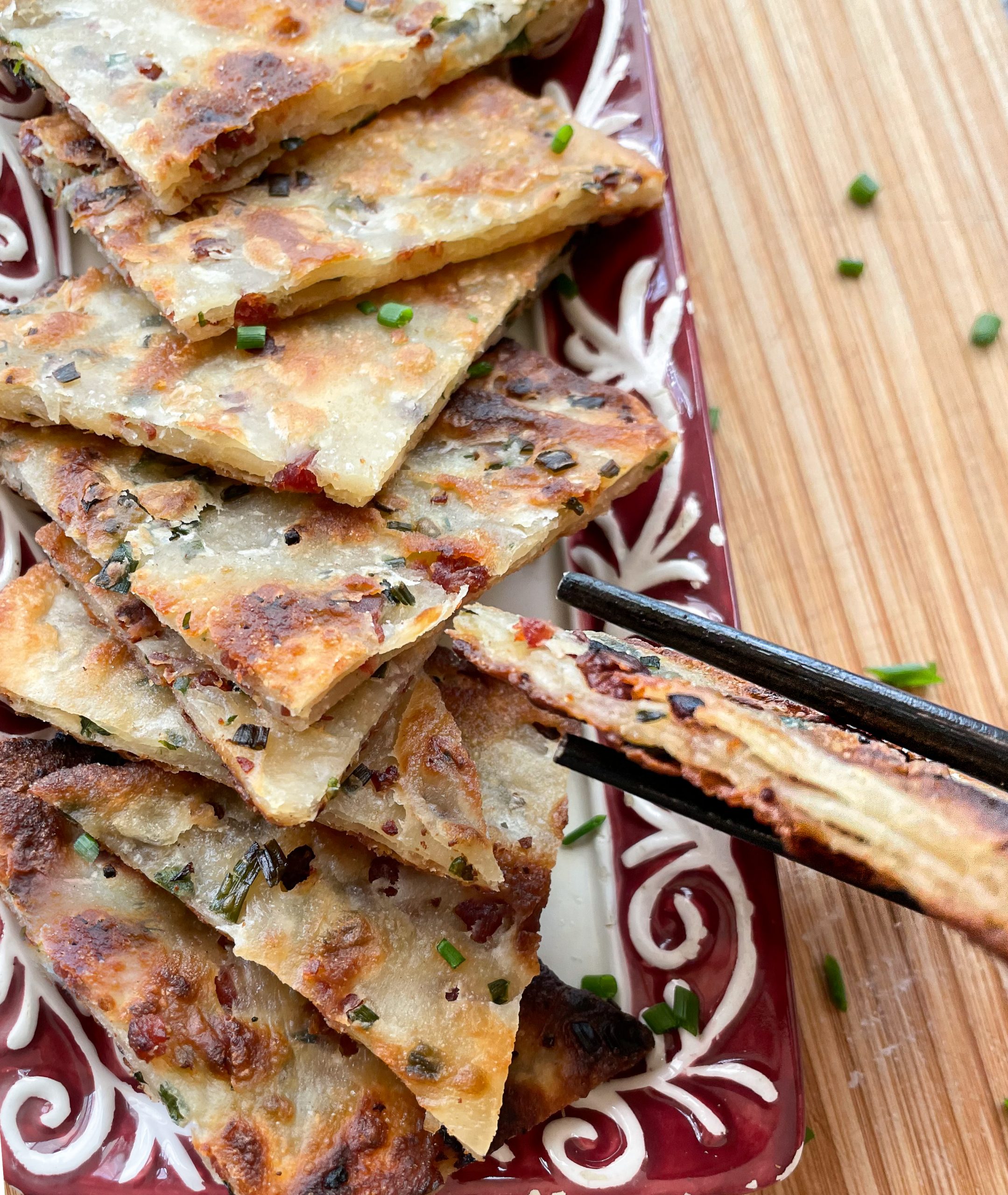
Flaky scallion pancakes with Chinese sausage
SCALLION PANCAKES WITH CHINESE SAUSAGE
Ingredients
- 125 g cake flour or all purpose flour
- 80 g boiling water
- 20 g room temperature water
Filling paste
- ¼ tsp sea salt
- ½ stick Chinese sausage
- 15 g chopped scallions chives
- 1 Tbsp cooking oil or coconut oil
- 1 Tbsp all purpose flour
Instructions
Dough
- Place flour in a bowl.
- Using a chopstick, add the BOILING water to the dough and mix.
- Gradually add the room temperature water and mix.
- Using your hands, combine dough to form a scraggly ball.
- Cover the bowl and allow to rest for 45 minutes.
Filling
- Finely slice scallions. Cut the white part length-wise before slicing to ensure tender scallions.
- Finely dice Chinese sausage in ¼ " (.5cm) pieces.
- Fry the Chinese sausage until the fat is rendered. Remove from heat.
- When cooled, add scallions, salt, oil and flour to make a paste. Cool in refrigerator until dough is ready.
Rolling the pancake
- Knead the dough to form a smooth ball.
- On an oiled surface, roll the dough into a fairly thin large rectangle
- Spread the filling over the entire surface of the rectangle.
- Cut the dough into the number of pancakes (2 for a 1x recipe) forming smaller rectangles.
- Roll the dough into a roulade or swiss roll, forming a long tube.
- Stretch the tube.
- Coil both ends of the tube to create a figure 8
- Stack one coil of the tube onto the other coil of the same tube by twisting the dough at the middle
- Using the palms of your hand, press the dough into thick discs
- Cover and allow to rest for at least 1/2 hour or overnight.
- Roll the discs with an oiled rolling pin on an oiled surface until 1/4 " (.6 cm) high
- Heat about ½ " (1.25 cm) oil in a skillet until 375° fahrenheit (191° celcius)
- Fry the pancakes on both sides until golden brown.
- Remove from oil and place on a wire tray.
- Cut each pancake into 6-8 pieces using a pair of scissors. Serve hot with soy-sauce for dipping if needed.
